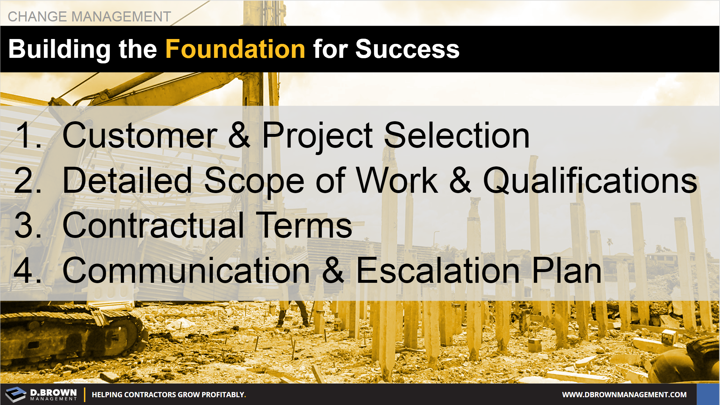Without these foundational items in place, you will never get the value out of streamlining the process.
- Select the right customers and projects that are aligned with your capabilities for managing change. Not every team has the same capabilities. This includes skills, mindset, and tools for managing change. Choose project types that are aligned. Some customers are notoriously bad with managing change, ranging into unethical tactics. Choose customers that align with your capabilities and culture.
- Be detailed in how you define your scope and qualifications for your scope. Communicate clearly with your customer until they fully understand what you are planning to do and what you are not. Qualifications may include items such as production rates, work area access, congestion levels, and time frames.
- Negotiate for contractual terms that provide fair protection for all parties with timely resolution for changes and a clear path to dispute resolution in the event of a disagreement.
- Build the relationships with your customer and indirectly related parties ahead of time. Know when and how to escalate issues so that they get resolved quickly while preserving the relationships.

